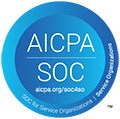In a News Alert released Thursday, June 9, 2016, the Centers for Medicare and Medicaid Services (CMS) announced is considering expanding its voluntary Medicare Set-Aside Arrangements (MSA) amount review process to include the review of proposed liability insurance (including self-insurance) and no-fault insurance MSA amounts. CMS plans to work closely with the stakeholder community to identify how best to implement this potential expansion. CMS will provide future announcements of the proposal and expects to schedule town hall meetings later this year.
The link to the alert can be found in the ‘What’s New’ section of the Medicare Coordination of Benefits and Recovery Overview page at CMS.gov.
Background
Signed in June, 1980,
42 U.S.C. §1395y(2)(A)) prohibits Medicare from making payment, except as provided in (B), for any item or service, to the extent that payment has been made, or can reasonably be expected to be made, under a workers’ compensation law or plan, an automobile or liability insurance policy or plan (including a self-insured plan), or no fault insurance.
42 U.S.C. §1395y(2)(B) – The Secretary may make payment under this title with respect to an item or service if a primary plan as described in Subparagraph (A) has not made or cannot reasonably be expected to make payment with respect to such item or service promptly. Any such payment shall be conditioned on reimbursement to the appropriate Trust Fund in accordance with the succeeding provisions of this subsection.
While statutory provisions included Liability cases, there were no LMSA guidelines . As a result, actions taken to comply with the MSPA statutes in a Liability case ranged from extremely conservative to strategies that earned the LMSA environment its characterization as ‘The Wild West’. Those who took the conservative route followed the CMS guidelines established for WCMSA. Other strategies ranged from making the LMSA decisions based on the severity of the injury in a liability case to doing nothing.
CMS’s Review of LMSAs
With no established thresholds for CMS submission and review, those who took the conservative path followed WCMSA guidance and attempted to submit. While certain of the CMS offices would review an LMSA, acceptance was random. Eventually, with greater acceptance and use of the WCMSA portal, CMS began to reject LMSAs. Submitters could make the effort to submit and obtain a letter of rejection.
While not a ‘safe harbor’, the attempt to submit was at least evidence of efforts to follow the guidelines.
CMS’s first attempt to address LMSAs
In June 2012, CMS began the process by releasing an Advanced Notice of Proposed Rulemaking (CMS-6047-ANPRM) to solicit public comment on how to implement an MSP process for liability settlements. The ANPRM received many public comments.
On August 1, 2013, CMS sent the NPRM to the OMB for their approval. The NPRM was never made public because the OMB did not approve it, and on 10/8/2014, this last attempt at ‘guidance’ surrounding Liability MSAs faded into the sunset whenCMS withdrew the NPRM. The reasons for the OMB’s rejection of the proposal were never made public.
Where are we now?
With the Liability TPOC mandatory reporting threshold of $1,000 beginning January 1, 2015 (and the voluntary threshold of $300), the BCRC now has access to more data on Liability claims than ever. And with the announcement of the CRC (Commercial Repayment Center) in October, 2015, and its singular focus on payer recovery, the BCRC has greater resources to pursue recovery with Liability settlements. With this combination of information and resources, it would follow that the absence of documented evidence to show that Medicare’s interests have been considered when settling a liability claim might lead to financial exposure for all stakeholders in the process…. the perfect time to introduce ‘guidance’ for the LMSA.
Tower will continue to monitor associated news on this topic and will actively participate in the TownHall Meetings regarding this topic.



